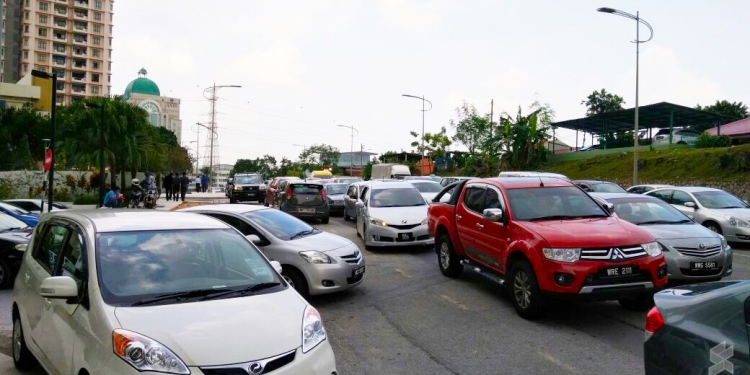A claim by road safety expert Professor Dr. Kulanthayan K.C. Mani of Universiti Putra Malaysia states that there are more numbers of vehicles in Malaysia than there are people in the country. However, former transport minister Liow Tiong Lai says he is certain that it isn’t true.
“The heading (of the media report) is very misleading. It is not possible that the number of vehicles is more than the population of Malaysia,” said Liow Tiong Lai.
Professor Dr. Kulanthayan’s claim that there are more cars was based on the fact that there are 33.3 million registered vehicles nationwide compared to 32.6 million people in the country last year. 47.3% of the registered vehicles are cars, 46.6% are motorcycles while 4.7% are goods vehicles. The rest were buses, taxis, self-drive car rentals, and others.
“What is surprising here is that the vehicle population in 2019 was 31.2 million. Subsequently, it increased by one million every year. In 2021, it was registered at 33.3 million. For the first time ever, in 2021, the trend of vehicle population outpaced the human population. Over all these years, it has always been the reverse,” continued Dr. Kulanthayan.
In Malaysia 2019
— Aysha Ridzuan (@ayshardzn) June 9, 2022
Total population: 32.5 mil
Total vehicles: 31.2 mil
In 2021
Total population: 32.6 mil
Total vehicles: 33.3 mil
For the first time ever the trend of vehicle population outpaced the human population. https://t.co/zIBPjUu50y
The news of the report traveled fast, causing a fair amount of online outrage. Twitter users said that it explains why the “roads are so freaking jammed“, and also pointed out that more highways are being built—which is a pretty silly way to solve the jammed roads situation.
While it is true that there are that many vehicles registered right now, the 33 million vehicles were all accumulated in the past 75 years—since the Registrar and Inspector of Motor Vehicles (RIMV) was incorporated on April 1 1946. Basically, the reported figure was an accumulation of registered vehicles since the British colonial days.
“They must put the facts in the right perspective… JPJ can use the latest road tax renewal records to confirm the numbers,” said Liow.
Liow also suggested that JPJ should implement a “death certificate” for inactive or dormant vehicles “so that we can know exactly the number of active vehicles in the country”. Currently, there are no “end of life” policies for Malaysian vehicles.
Even so, the Malaysian government is still going forward to build more highways due to the increase in the number of vehicles. This includes the Petaling Jaya traffic dispersal elevated highway (PJD Link), the Bangi-Putrajaya Expressway (BPE), and the Kuala Lumpur northern dispersal expressway (KL NODE).
According to Dr. Kulanthayan, he advised the government against building more highways and should instead channel its focus to investing and further improving the nation’s public transportation infrastructure, especially the rail-based public transportation system. He also suggested that industries could do their part and provide transport for their employees or give subsidies or incentives for their employees to utilise public transportation systems.
[ SOURCE ]








